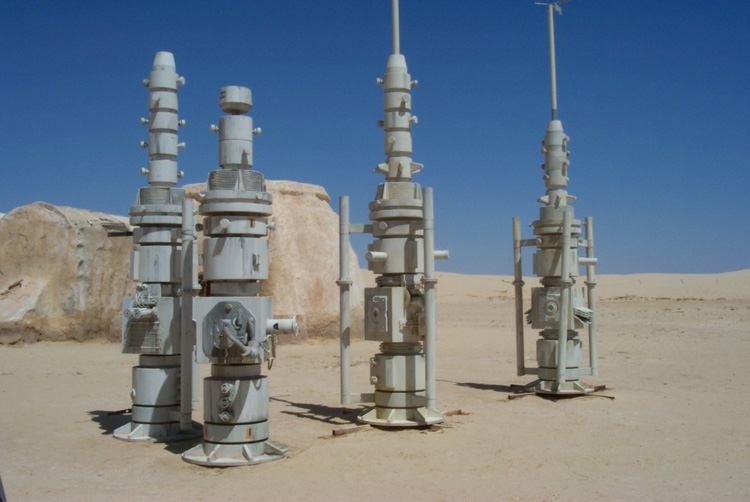
Putting the “Science” in “Science Fiction” – Orbital Drops / Boosting the Danger Quotient
Whether it is through the use of individualized drop pods, reinforced armor suits, “gravity chutes,” impact-resistant gel, or even good old-fashioned parachutes, orbital drops are a common event in many pieces of military science-fiction. This maneuver is a more high- tech version of the conventional air drop, in which brave soldiers are dropped from orbit in order to land directly near an important objective or in the midst of enemy territory. In some versions of this tactic, vehicles or supplies are also dropped from orbit, allowing them to be delivered directly to where they are most needed by troops on the ground. The tactical implications of this are enormous, as they allow military assets to be placed at the point where they would have maximum impact without the need to move them across hostile territory or through dangerous airspace. This capability would allow for almost total surprise and the ability to respond instantly to enemy offensives. Being able to deploy people or supplies this way would also be very helpful in civilian life, allowing doctors or medical supplies to be sent to areas of need with no delay.
In fiction, the two most common methods of orbital drops are armored drops and drop pods. Armor drops consist of power-armored troopers (which I have discussed in several earlier blogs) and their larger giant robot cousins simply being dropped from orbit, as in the video game ‘Section 8’ or the Roughnecks Starship Troopers television series. In these cases, the dropped units are equipped with jets or thrusters that allow them to slow down before impact, preventing them from smashing into the ground at terminal velocity. The more common type of orbital drop is accomplished through the use of drop pods, specialized capsules that safely carry their payload to the surface. These drop pods usually carry only a single occupant, like those used by the Halo series’ Orbital Drop Shock Troopers, or can be large enough to carry entire squads or large vehicles, like those used by Warhammer 40,000’s Space Marines. These pods are launched singly or in large numbers, safely conveying their occupants to the battlefield and then opening to allow them to quickly disembark. The advantage of these drop pods is that they are much more versatile and can be used without the need to rely on powered armor or robot vehicles.
Enormous tactical and logistical advantages can be gained from the ability to deploy soldiers directly from orbit to any location on the ground, but using such a technique poses many problems when relying on modern technology. The main one is simply getting people into orbit in the first place. Reaching orbit is still a difficult, expensive and time-consuming venture, and it is simply not feasible to transport military assets into space simply to bring them back down again. Reentry is also still very dangerous, and potential hazards in space mean that it is impossible to leave soldiers and equipment on standby in orbit just in case they are needed. Since planning a space mission currently takes months of preparation time, this means that most of the benefits of orbital insertions would be negated.
Besides the proposed US Military “Sustain” project, an old proposal for creating manned spacecraft to carry marines to warzones within hours, very few attempts have been made to address the idea of orbital deployment of military assets. The closest thing that exists to this science-fiction trope is high-altitude military drops. These drops are classified as HALO (High Altitude Low Opening) or HAHO (High Altitude High Opening), depending on how long the soldiers wait before opening their parachutes. In these techniques, the soldiers leave the plane at a very high altitude in order to keep the plane safe from enemy fire, parachuting in for maximum stealth. When the parachutes are opened is determined by the needs of the mission, with HAHO jumps being quieter and allowing more travel distance, and HALO jumps being faster and minimizing exposure to enemy fire. Although they may sound similar to common parachute drops, these operations entail many additional risks, due to the height from which soldiers must fall.
HALO and HAHO jumpers are at risk of hypothermia and suffocation due to the cold temperatures and lack of breathable air at those altitudes. To combat these dangers, soldiers wear thermal clothing and oxygen masks when performing high-altitude jumps. Another more subtle risk is decompression sickness, a problem that is usually associated with scuba divers. This painful and potentially fatal complication is caused by gas bubbles forming in the bloodstream, where they can block blood flow to vital organs. To prevent this from occurring, soldiers spend 30 to 45 minutes breathing pure oxygen in order to remove all nitrogen (the gas that usually causes decompression sickness) from their blood. Once this is complete, they are equipped with a small oxygen tank and are then ready to jump. The risks, necessary training and expense mean that these types of parachute deployments are only used when necessary, such as when advanced reconnaissance teams or special forces units are deployed into enemy territory.
Orbital drops will likely remain an element of science-fiction until space travel becomes feasible and commonplace, but in the meantime, parachute drops will fill a similar role throughout the world’s militaries. Although this may seem less exciting for sci-fi fans, even routine parachute drops are very risky, and adding the hazards of high altitudes boosts the danger quotient significantly.
















